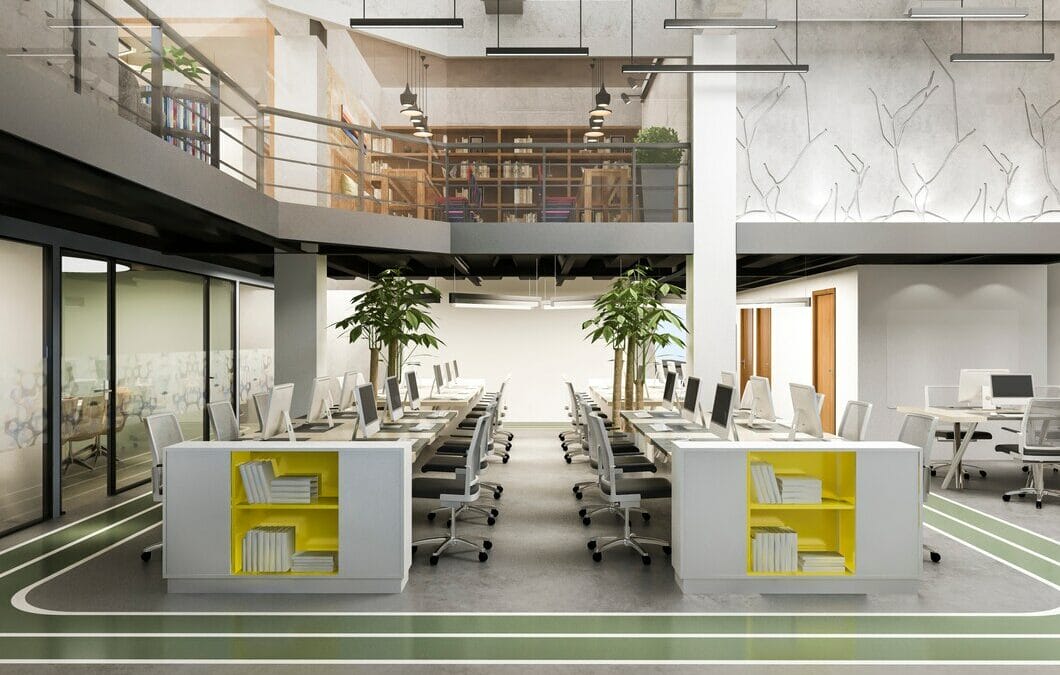As offices continue to evolve in response to emerging technologies and shifting employee needs, lighting has become an integral component of creating a sustainable, efficient, and productive work environment.
In 2024, businesses are adopting networkable LED lighting solutions that not only reduce energy consumption but also promote a truly connected and intelligent workspace. Implementing a networkable LED lighting system in your office brings numerous benefits, including adaptability, dynamic lighting control, and environmental friendliness, all of which contribute to the overall health and well-being of the workforce.
As the world grows increasingly digital, offices must adapt to the progressive requirements of the connected age. By seamlessly integrating with building management systems and leveraging IoT technology, these lighting systems provide a comprehensive approach to energy efficiency, occupant comfort, and overall workspace functionality.
Key Advantages of Networkable LED Lighting Solutions
The adoption of networkable LED lighting solutions in the modern office goes beyond energy efficiency. Here, we explore the primary advantages that make these systems an essential component of cutting-edge and sustainable work environments:
- Energy Efficiency: LED lighting consumes significantly less power compared to traditional lighting sources, enabling businesses to reduce their energy consumption and related costs. Networkable LED systems offer additional efficiency by allowing centralized control and automation of lighting schedules, further optimizing energy usage.
- Dynamic Lighting Control: Networkable LED lighting systems provide customizable lighting schemes that adapt to the specific needs and preferences of users. This adaptability enables businesses to create tailored lighting environments for diverse tasks and activities in the workspace.
- Integration with Building Management Systems and IoT: These systems can easily integrate with building management systems and IoT technology, consolidating the control of critical building functions and delivering increased operational efficiency.
- Environmental Impact: By reducing energy consumption, networkable LED lighting systems contribute to environmental sustainability efforts, shrinking your organization’s carbon footprint and enhancing corporate green initiatives.
Applications of Networkable LED Lighting in Diverse Office Environments
Networkable LED lighting systems offer numerous applications across diverse office environments, empowering businesses to design intelligent and intuitive lighting solutions that emphasize occupant comfort and well-being. Some of these applications include:
- Individual Workstations: Adjustable, task-oriented lighting at individual workstations allows employees to create personalized lighting scenes that cater to their comfort and productivity.
- Meeting Rooms and Conference Spaces: Dynamic control of lighting in these spaces ensures optimal visibility for presentations, video conferences, and collaborative sessions, providing flexibility for a variety of uses and settings.
- Common Areas and Breakrooms: Networkable LED systems can be programmed to adjust ambient lighting in communal areas according to occupancy, creating inviting and energy-efficient spaces that encourage collaboration and relaxation.
- Outdoor Spaces and Building Perimeters: Exterior lighting can be integrated within the networkable LED system, offering enhanced security and visibility for employees while also contributing to energy management goals.
Considerations for Implementing Networkable LED Lighting Solutions
To ensure the successful implementation of a networkable LED lighting system in your office, consider the following critical factors:
- Compatibility with Existing Infrastructure: Evaluate your office’s current lighting infrastructure and the compatibility of networkable LED solutions with these systems. This ensures a smooth and efficient transition to the new technology, minimizing disruption and maximizing ROI.
- System Scalability and Flexibility: As your business grows and evolves, your lighting system should adapt to accommodate changes in your office space, staff numbers, and usage patterns. Opt for a scalable and flexible solution that can be modified or expanded as needed.
- Wireless vs. Wired Network Options: Networkable LED systems can operate on wired or wireless networks, each offering distinct advantages and limitations. Assess your office environment and IT infrastructure to determine the best networking approach for your system.
- Cost and ROI Analysis: Assess the upfront and ongoing costs of implementing a networkable LED lighting system, and consider the potential ROI in terms of energy savings, productivity boosts, and occupant satisfaction.
Maintenance and Monitoring of Networkable LED Lighting Systems
The effectiveness of a networkable LED lighting system depends on regular maintenance and monitoring to identify and address potential issues and ensure optimal performance. To promote the longevity and efficiency of your system:
- Monitor Energy Consumption: Regularly track energy usage data to identify trends and opportunities for further optimization.
- Schedule Preventative Maintenance: Plan and perform regular system maintenance tasks, such as cleaning fixtures and replacing worn components, to prevent unexpected failures and extend the life of your lighting system.
- Stay Current with Software Updates: Keep your networkable LED system up-to-date with the latest firmware and software updates, which may include new features, enhancements to existing functions, and bug fixes.
- Maintain System Security: Implement security best practices, such as network segmentation and strong authentication protocols, to protect your lighting system from potential cyber threats.
Future-Proofing Your Office with Networkable LED Lighting
Networkable LED lighting systems have become an essential aspect of 21st-century office spaces, offering a host of benefits that optimize energy usage, enhance employee wellbeing, and streamline facilities management. By considering the key advantages, applications, and critical factors for implementing these systems and maintaining their performance over time, businesses can create an intelligent and adaptable workspace that empowers productivity, fosters collaboration, and supports sustainability initiatives.
Embracing the potential of networkable LED lighting technology allows decision-makers to create future-ready, agile work environments that cater to the evolving needs and preferences of today’s tech-savvy employees. In turn, these businesses will be better equipped to thrive in the competitive digital landscape of 2024 and beyond.
Get in touch with our communication technicians here at Basile Consulting to learn more about how we can help your venture flourish in more ways than one!


